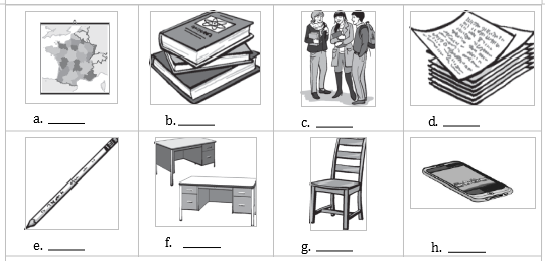Read the following summary of cultural information from “Capítulo 2”, then indicate the correct words to complete each sentence. ¡OJO! Some sentences have more than one answer.
The capital of Mexico, Mexico City, is Mexico’s largest city where people with all different kinds of interests can spend their leisure time. For one thing, it is an important historical city that houses many museums and other historical sites, as well as the famous plaza el Zócalo. Here people can visit the Palacio Nacional, a government building that is also home to some of Diego Rivera’s famous murals. Even more ancient is the Templo Mayor, which is an archeological site that contains preserved ruins from the Aztec empire.
For people who want to spend time with their cuates, or friends, the Coyoacán neighborhood is perfect for walking around and observing colorful houses, as well as visiting literary coffee shops and listening to live music. There are also plenty of outdoor activities to do like running or biking in one of the city’s many parks. Additionally, there are also plenty of nightlife options for enjoying local or international cuisine, bars, theaters, and more. For those who enjoy listening to Mariachi bands, people congregate in the Plaza Garibaldi to hear different groups play traditional Mariachi songs. It goes without saying that there is something for everyone to enjoy in Mexico City.
The Templo Mayor…
a. contains some of Diego Rivera’s murals.
b. represents colonial legacy.
c. houses the Palacio Nacional.
d. contains ruins from the Aztec empire.
d. contains ruins from the Aztec empire.
You might also like to view...
Indicate if the following statements are true (vero) or false (falso), according to the reading.
1. La Toscana è vicina al Lazio. 2. Il Chianti è un vino bianco. 3. Firenze è il capoluogo della Toscana. 4. Boccaccio ha scritto il Canzoniere. 5. Gli abitanti di Firenze sono i fiorentini.
Scrivi una mail alla tua famiglia descrivendo il tuo giorno come insegnante. Finisci con le preposizioni appropriate dove necessario.
Ciao a tutti! Sono contento (1) _____ dirvi che oggi ho insegnato alla scuola elementare locale. Il direttore mi a chiesto (2) _____ venire per un giorno e insegnare tre corsi diversi. All’inizio avevo paura (3) _____ commettere un errore, ma dopo quindici minuti ho desiderato (4) _____ rimanere per sempre. Mi piace (5) _____ insegnare, e adesso penso (6) _____ iscrivermi alla facoltà di scienze dell’educazione all’università. Gli altri insegnanti mi hanno aiutato (7) _____ preparare le mie lezioni e ho cominciato (8) _____ imparare sin dall’inizio del giorno. È divertente (9) _____ essere insegnante e mi sono divertito moltissimo. Un grande bacio a tutti! Ciao!
Avarice
a. thriftiness b. wastefulness c. greediness
Le genre et le nombre.
Première étape.
Begin each sentence with “C'est un… ,” “C'est une…,” or “Ce sont des…” based on the gender (masculine or feminine) and number (singular or plural) of the noun in each sentence.
EXEMPLE: C’est une fenêtre.
1. ________________________ bureaux.
2. ________________________ portable.
3. ________________________ livres.
4. ________________________ chaise.
5. ________________________ carte.
6. ________________________ crayon.
7. ________________________ étudiants.
8. ________________________ feuilles de papier.
Deuxième étape.
Now match the sentences in the “Première étape” (page 4) with the corresponding illustrations.
